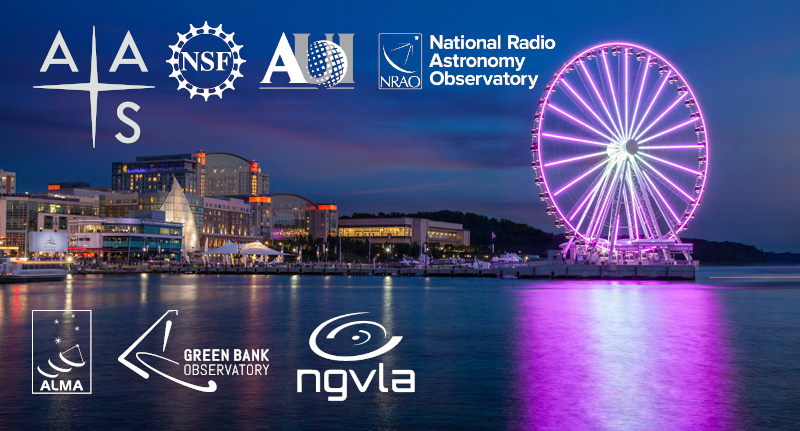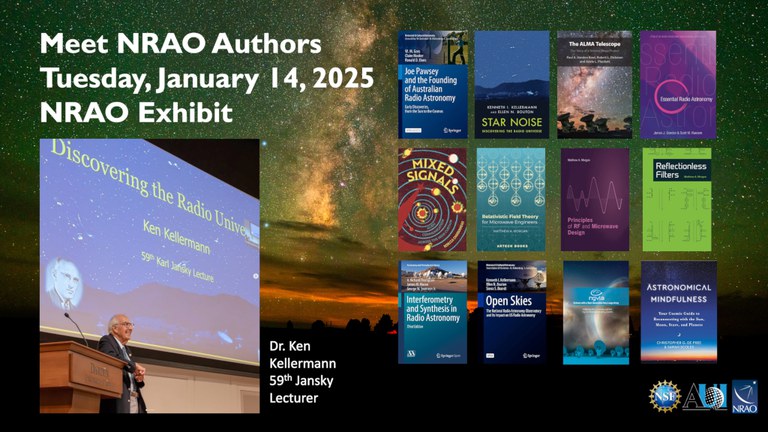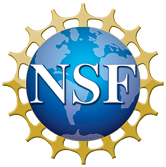2025
245th American Astronomical Society Meeting
NRAO at AAS 245 in National Harbor

The NSF National Radio Astronomy Observatory, NSF Green Bank Observatory, and Associated Universities, Inc. will be playing a major part in the January 2025 245th meeting of the American Astronomical Society. Join the NSF NRAO leadership, staff, users, and students for a week sharing outstanding science results and technology developments.
See the meeting website for conference details.
The block schedule is now available.
| Session | Date | Time | Location |
|---|---|---|---|
| Grad School and REU Fair | Sunday, January 12 | 5:30pm to 7:00pm | Prince George's Exhibit Hall E |
| Opening Reception | Sunday, January 12 | 7:00pm to 9:00pm | Exhibit Hall CD |
| Learn about the ALMA WSU |
Monday, January 13 | 1:30pm to 2:00pm | NRAO Exhibit |
| NRAO Town Hall | Monday, January 13 | 6:30pm to 8:30pm | Potomac Ballroom C |
| ALMA Ambassadors Networking |
Tuesday, January 14 | 9:00am to 9:30am | NRAO Exhibit |
| New perspectives on protoplanetary disks in the era of JWST and the ALMA Wideband Sensitivity Upgrade | Tuesday, January 14 | 10:00am to 11:30am | Chesapeake 4-5 |
| US NSF Town Hall | Tuesday, January 14 |
12:45pm to 1:45pm | Potomac Ballroom AB |
| Learn about the ALMA WSU | Tuesday, January 14 | 1:30pm to 2:00pm | NRAO Exhibit |
| Splinter: The Next Generation VLA: Update and Community Forum |
Tuesday, January 14 |
2:00pm to 3:30pm | Maryland Ballroom B |
| Meet the NRAO Book Authors |
Tuesday, January 14 |
5:30pm to 6:30pm | NRAO Exhibit |
| RFI Detector Demo |
Tuesday, January 14 |
5:30pm to 6:30pm | NRAO Exhibit |
| Exploring the radio sky with the DSA-2000 and the ngVLA |
Wednesday, January 15 |
9:30am to 11:00am |
Maryland 1-2 |
| Learn about the ALMA WSU | Wednesday, January 15 | 1:30pm to 2:00pm | NRAO Exhibit |
| Fundamental Physics and New Messengers |
Wednesday, January 15 |
2:00pm to 3:30pm | Maryland Ballroom B |
| Local Student Tour |
Wednesday, January 15 |
1:50pm to 2:30pm | NRAO Exhibit |
ALMA Special Session AAS 245
New perspectives on protoplanetary disks in the era of JWST and the ALMA Wideband Sensitivity Upgrade
The NAASC will host a special session at the upcoming 2025 245th Winter AAS Meeting in Washington DC, on Tuesday January 14 at 10 am. This special session will present recent high-impact ALMA and JWST results in different subfields of protoplanetary disk studies, and introduces how future synergistic experiments enabled by the transformative capabilities increase from ALMA-WSU will support the next revolution in the field.
The session will include 4 invited talks by M. Van 't Hoff (Purdue University), C. Espaillat (Boston University), K. Pontoppidan (JPL), K. Zhang (Wisconsin) and a short general presentation of the WSU by J. Donovan Meyer (NRAO).
Presentations:
J. Meyer : Intro to the ALMA Wideband Sensitivity Upgrade
C. Espaillat: Dynamic Protoplanetary Disks: New Perspectives from JWST and ALMA
M. Van 'T Hoff: Young Embedded Disks: The ALMA (WSU) and JWST era
K. Zhang: Chemistry Surveys of Protoplanetary disks
Abstract:
ALMA observations have been the basis for a revolution in the understanding of the structure and gas composition of protoplanetary disks, thanks to its ability to probe emission from embedded and/or cold regions. This new paradigm has now been leveraged by results from JWST uniquely characterizing dust and ice grain size distribution and composition in inner disks, unveiling the processing of water and hydrocarbons. Together, such observations can paint a 3-D view of the general vertical structure in a number of disks at different evolution stages. Most recently, ALMA and JWST data have provided characterization of ongoing processes at the scale of embedded planets and protoplanets, such as direct evidence of gravitational instabilities, gas and dust accretion onto planetary cores, planet-driven outflows and planetesimal growth from molecular freeze-out on dust grains. As a detailed and nuanced picture is emerging of the processes driving the formation and evolution of protoplanetary disks, the next step would be to establish the framework linking the spectral type and multiplicity of hosts stars to the structure of their planetary systems and the composition of planetary atmospheres.
When JWST approaches the end of its planned mission lifetime, ALMA will have completed the first phase of a major upgrade of its components - the Wideband Sensitivity Upgrade (WSU), consisting of a completely new digital path, correlator, and three new wideband receivers - with additional receiver bands to follow. For protoplanetary disks, this comprehensive upgrade translates into much more effective spectral surveys for extensive molecular gas composition characterization, increased image fidelity and sensitivity for the detailed identification of disk substructures and kinematic distortions, and overall access to a much larger number of targets, including compact disks, for a better sampling of the variety of disk sizes and evolution stages.








Connect with NRAO